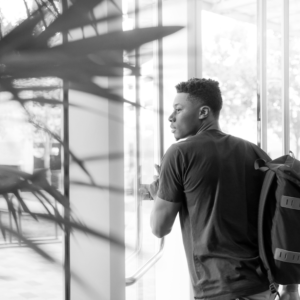Helping Families Save for College
HIGHLIGHTS
- Children’s Savings Accounts could help address equity gaps in education early
- Designing effective programs requires understanding who uses accounts and what barriers different groups face to engaging and saving
- We worked with San Francisco’s Office of Financial Empowerment to better understand how families engage with the Kindergarten to College program
The Challenge
Despite decades of work in the U.S. to close achievement gaps, huge disparities in who goes to and completes college continue to persist. In particular, students of color are less likely than their white peers to go to college at all, and far less likely to graduate. Saving for college through a Children’s Savings Account (CSA) presents an opportunity for policy-makers to address these equity gaps early. As soon as a child is enrolled in a college savings program, that child, their family, and the community have a chance to start building habits, intentions, and beliefs on the path toward college. In this way, the act of saving itself can help families build a college-bound identity—the sense that college is achievable for their children—and this identity can then help lead to future savings.
In order to use CSAs as a tool to increase equity, programs must be designed for families who have been historically left out of higher education and their particular needs. While the evidence on exactly which program elements help students build a college-going mindset is limited, practitioners have an opportunity to leverage data from CSA programs in order to better understand who is using them, how they are saving, and how CSAs can be strengthened for the families who stand to gain the most from saving early. With an understanding of those gaps, behavioral science offers a wealth of potential solutions to help families bridge the gap between the intention to save and taking action.
Our Approach
In 2019, ideas42 and San Francisco’s Office of Financial Empowerment worked together to better understand how different families in San Francisco are using their Kindergarten to College (K2C) savings accounts and identify opportunities to improve equity. In previous work together, ideas42 and K2C worked to behaviorally redesign outreach materials for all new families in the program. In this latest engagement our goals were to build on the K2C program’s commitment to equity in two ways:
- Use data analysis to understand gaps in engagement: Who in San Francisco uses K2C accounts, and what metrics should be used to gauge engagement? By analyzing program data, we identified low-to-moderate-income groups of families who are not currently using K2C but may benefit from behavioral interventions.
- Understand behavioral barriers facing priority families: For Black, Hispanic, Native American, and Pacific Islander families in lower-income neighborhoods, what are potential elements of their context that make engagement challenging? We used qualitative research methods to better understand particular barriers that these families of intended K2C users face.
Results
We found a number of gaps in engagement which can identify paths to better serving families. For instance, the overall deposit rate for Black, Hispanic, Pacific Islander, and Native American families—which we identify as underrepresented minorities (URM)—is just 17.8%, a full 4.3 percentage points lower than for white families, indicating that there is more work to be done to help support URM families in the program.
We also identified three barriers to saving that have potential to be addressed using behavioral science:
- Many families want to save, but the cost of college seems intimidating
- Families don’t always trust financial institutions
- Banking presents hassles unique to priority families
Read our full report, Balances and Beyond: Establishing Equity in College Savings, to learn more about gaps in engagement and the behavioral barriers identified.
Takeaway
Overall, more families saving in CSAs means more children building their intentions and financial capacity to go to college. More students from disadvantaged populations attending and completing college will help to overcome long-standing barriers to economic mobility, which will further close the gap CSA programs were designed to address.
As we continue to work to identify the most impactful ways CSAs can direct their resources, we can ensure we are providing students the best and most equitable opportunity to succeed. And beyond identifying equity gaps, behavioral design has a crucial role to play in ensuring that programs are built with real people in mind and targeted to the groups who can benefit from them the most.
Interested in learning more about this work applying behavioral science to a crucial social problem? Reach out to us at info@ideas42.org or tweet at @ideas42 to join the conversation.
Partners










